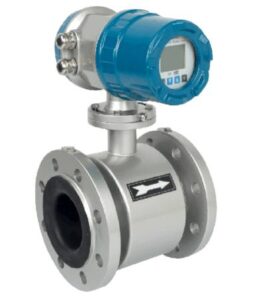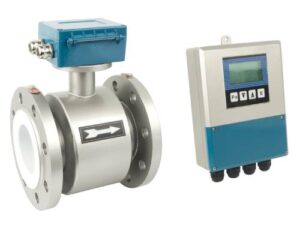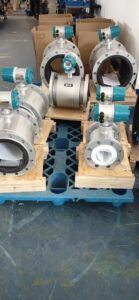Daily maintenance
Only needs to perform periodic visual inspections of the meter, check the surrounding environment of the meter, sweep away dust and dirt, ensure there is no water and other substances, check whether the wiring is in good condition, and check whether there are newly installed strong electromagnetic field equipment or newly installed wires near to the meter.
If the measuring medium is likely to contaminate the electrode or deposit or scale in the wall of the measuring tube, it should be cleaned and cleaned regularly.

Fault finding
When the flowmeter is put into operation or it is found that the meter is not working properly after a period of normal operation, first check the external conditions of the flowmeter, such as whether the power supply is good, whether the pipeline is leaking or not in a full state, whether there are bubbles in the pipeline, whether the signal cable damaged, whether the output signal of the converter (that is, the input circuit of the subsequent instrument) is open. Remember to dismantle and repair the flowmeter blindly.

Sensor inspection
Test equipment: one 500MΩ insulation resistance tester and one multimeter.
Test steps:
(1) When the pipeline is full of media, use a multimeter to measure the resistance between terminals A, B, and C. The resistance between A-C and B-C should be as large as possible. If the difference is more than 1 time, it may be that the electrode is leaking, the outer wall of the measuring tube or the condensation water in the junction box may be adsorbed.
(2) When the lining is dry, use an MΩ meter to measure the insulation resistance between A-C and B-C (should be greater than 200MΩ). Then use a multimeter to measure the resistance between terminals A and B and the two electrodes in the measuring tube (which should be in a short-circuit connection state). If the insulation resistance is very small, it means the electrode is leaking, and the entire flowmeter should be returned to the factory for repair. If the insulation has dropped but there is still more than 50MΩ and the inspection result of step (1) is normal, it may be that the outer wall of the measuring tube is damp, and a hot air blower can be used to dry the inside of the housing.
(3) Use a multimeter to measure the resistance between X and Y. If it exceeds 200Ω, the excitation coil and its lead wire may be open or poorly connected. Remove the terminal board and check.
(4) Check the insulation resistance between X, Y, and C. It should be above 200MΩ. If it drops, use hot air to dry the inside of the shell. In actual operation, the decrease of coil insulation will cause the measurement error to increase and the output signal of the instrument is unstable.
(5) If it is determined that the sensor is faulty, please contact the manufacturer. Generally, it cannot be solved on-site and needs to be repaired by the manufacturer.
Converter inspection
If it is determined that the converter is faulty, please contact the manufacturer if there is no problem after checking the external cause, and the manufacturer will generally adopt the method of replacing the circuit board.

